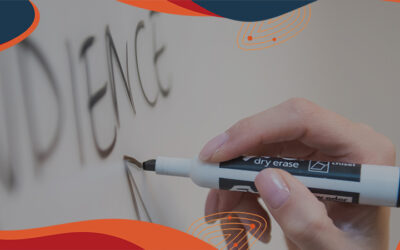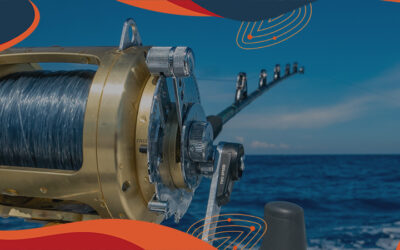TRANSCRIPTION OF EPISODE
Chris: Okay. Ready to rock?
Logan: I am ready to rock.
Chris: All right. On this episode of Intent Topics, we’re going to give three email conversion tips that we’ve uncovered. Logan, how you doing buddy?
Logan: What’s cracking, man?
Chris: Oh, man. Living the dream. Living the dream. Great day today. We’ve got a ton done. I’m feeling it.
Logan: Yeah, yeah. Me too. It’s a crazy day but a good day. A bunch of calls, a bunch of work.
Chris: Nice.
Logan: Pumped to podcast.
Chris: Nice. Nice. Nice. Today we’re going to give a few tips on email conversion that you’ve uncovered while doing client delivery. Want to-
Logan: Absolutely.
Chris: Why don’t we start with … this one interests me, I did not expect this, but you were saying that you found a full link rather than a hyper linked word converts noticeably better, significantly better, I’d say. Talk to me about that a little bit.
Logan: Yeah, man. When I started all this, when you look at an email, you don’t want to see the full URL, if you’re writing it. It doesn’t look clean. It looks kind of cluttered, right? It’s hyperlink. The assumption is looking kind of clean and everything is really powerful and might give the air of sophistication and professionalism and what not.
Chris: Legibility, right?
Logan: Yeah. But what we’ve found, this is our hypothesis, is everything we do to become more conversational and creating emails that look like it truly is that one to one, not canned outreach, we really did sort of build the outreach or build that email fairly personalized. Everything we’ve done to sort of get to that point has resulted in better and better results. So, what we’ve found is, and we tested this over a lot of clients, a lot of different styles and times, and different emails, and also different purposes of the emails, we found that the full link, not the hyperlink, the full link, like the full URL with everything, is more URL shorteners suck.
Chris: Really?
Logan: Yeah. It doesn’t look conversational, right? It looks like you’re trying too hard.
Chris: Well, yeah. Also, not to be captain obvious here, but if you think of a call of action, right, that you want it to stick out, I’ve seen UX research that said, “Just the bigger the button, the more red the button, the better it converted.” So why wouldn’t that be the same? However, one could argue about the aesthetic.
Logan: Well-
Chris: That’s a big ongoing topic, and I’ve kind of got into this in other conversations, but like a beautiful website is not always a strong converting website. And it sounds like the same may apply to a prospect email.
Logan: So, if I’m a marketer, right, and I’m like, “Yo, check out this ebook,” I want somebody to click the link. If I’m a salesperson, where I’m trying to develop sales-qualified leads or appointments for one of my clients, I don’t care if they go to the website, right?
Chris: You want a response.
Logan: I want a response, right? So, content … I was having a conversation with a client earlier today, and it was like “Well, what style or content do you think is the most effective. What do you think is the most powerful?” Dude, the content is literally just a here’s something to talk about other than I want to sell you something.
Chris: Right, please call me back.
Logan: That gets old before somebody is done with the first email, but I want to be valuable. And what we’ve found is just having that piece of content in the email and then the hypothesis is of the theory is that if it’s like I’m trying to be helpful, I found this piece of content that might be valuable to you, I threw in the link, I’m not really thinking about I want to look super put together. I don’t want to look like I spent seven hours writing this email. It didn’t go through four rounds of revisions work. It probably did when we’re writing it, right?
Chris: Yeah.
Logan: But having that full URL makes a difference to the actual reply rate. Positive reply rate. Go ahead.
Chris: So, let me ask you, are people clicking on it and replying or are they just replying? Do you have visibility to that?
Logan: Yes. So, statistically, significant lower clicks for a lot of stuff. So, on that link, statistically significant lower clicks and a higher responsary.
Chris: That’s interesting.
Logan: Now, the real interesting thing is what we did not see because we obviously, when we do the replying thread or we do the second or the third outreach after that email, we haven’t seen a major drop in the efficacy of the emails in phone call outreach trading leads even if they don’t click. So the idea would be if they read the blog article and then sort of conventional thought is they click, they read the blog article, maybe they don’t respond to, but if you’re a short followup message a week or two later, maybe they’re more likely to respond.
What we’ve found is regardless of whether they go to the website and read the blog article or consume the video or whatever, it’s just about the same conversion reply conversion between the hyperlink or the era. So what we’re saying is look conversational, look valuable, be authentically valuable in your outreach, but don’t obsess over the metrics that don’t matter that the real metric that matters is the reply rate. And you get replies when you look conversational. And so, I think that’s kind of the hypothesis now, have I called up a prospect after they reply between that hyperlink or the full URL and ask them why they replied. No, sir, because we want to sell stuff. But that’s as far as we’ve gone in. So, when we’ve got data that looks pretty conclusive, we’re just going to roll with it.
Chris: Yeah. It kind of is unseen being. I got advice early in video in marketing and prospecting that was, if you try to look overly buttoned up and you miss the mark, you’re worse off than if you were to just like [inaudible 00:07:37] it and you’re not trying to look overly polished. And you see that with sales prospecting in video, there is like, “Hey, I just pulled up your website or I’m recapping a meeting with video. This isn’t Steven Spielberg. I’m just trying to send you a personalized message with some video.” And I think the same’s here, it’s like I’m trying to appear to just be writing you just a personalized email saying, “Hey, what’s up? This isn’t a massive production from a huge marketing department. So I liked this tip a lot.
Logan: Yeah, man. I think it’s all about that. It’s all about being authentic, you know?
Chris: Nice. So tip number two, this one was extreme. This is where the client recently, a couple of clients where we were revising content and you had the idea of using this particular clients’ calendar booking link. Talk to what you do there and what the result was.
Logan: Yeah. So calendar booking links in outreach is nothing new. It’s a really good idea, right?
Chris: Mm-hmm (affirmative).
Logan: And one of the things that I’ve always had a problem with these booking links is I feel like it’s lazy, right?
Chris: Yeah, and it’s punting the shit work.
Logan: Yes. Yes, exactly. And it kind of goes into the being conversational, right? So I put in a calendar link, like book a link. It’s like when somebody says, “Oh, I can help you generate ROI, right? It’s like lazy. Like what does that mean? Right? You want to book a meeting with me, you’re going to generate me ROI. Like these are [crosstalk 00:09:25] like don’t really … We all know what they mean, but at the same time, like what do they mean to me? So what we did was we … There were two places that we got wins. One was we described the benefit in a very sort of like non salesy way, right? So like, “Hey, if you’d rather skip emailing back and forth, you know, click here.”
Chris: Here’s an easy way to book some time.
Logan: Sure. The other thing we did was put it right in the signature. And so, the signature, I think people don’t realize how often clicks happen from the signature. Very few people actually track the signature, which is interesting. I don’t think a lot of the marketing automation has click tracking in email signatures because a lot of times it’s like you’re writing that signature or you might not even have a signature. That’s kind of like where there’s a lot of personal information. So two things we did was stick it into the actual copy, and that was part of kind of a closing paragraph or put it in the signature. What we didn’t do was stick it at the end, like, “Hey, book a meeting on my calendar.”
Chris: Yeah, it was directly a part of the email-
Logan: Exactly. Exactly. Exactly.
Chris: I’ll pause you a quiz. Very, very different from everyone, not everyone, but lots of people you see where they just put it in their signature and they think, “Oh, yeah, people …,” like this is a very deliberate, “Hey, would you please go book some time with me?” Or we can [crosstalk 00:11:14], but I think is a big differentiator from what you commonly see with like book a meeting with me and a signature or something like that.
Logan: Well, as I said, the signature actually did work. What I think is disingenuous and I think is a waste of time is when you close an email with like, click this link to book a time with me. That screams like you were in a mass email list, and I’m just trying to get somebody to agree to a meeting with them. Now, a couple of years ago, I was using a tool called Mixmax, which is interesting. The deliverability in Mixmax has gotten crushed lately. But it’s for Gmail and you can actually insert specific times. So, I played-
Chris: Tons of meetings?
Logan: Yeah. Yeah, which was cool.
Chris: Length of meetings or actual proposed dates?
Logan: Yeah, proposed dates and times. So you could insert a few different times. And that’s interesting. That’s also an interesting idea that I’m working on testing, is actually putting some times in the emails. Like, “Hey, you know, I saw this, I think that this could be an interesting conversation. Here’s a few times what might work for you,” as opposed to the other disingenuous, “Hey. How does a call next week look?” That’s an automated email, right?
Chris: Yeah.
Logan: That’s a close even on Monday, it could be while I’m just trying not to pressure them, right? So, really putting context around it like, “Hey, if you don’t want to go back and forth, just throw some time on my calendar, and here’s some time.” And be careful with that calendar link to have every single open time, make it look like you’re not busy. I think that’s … If nobody else is booking on your counter, why would I, right?
Chris: Yeah.
Logan: Or the signature actually does work pretty well if you truly look like you’re conversational in your email, right? So, the marketing style, direct response kind of email with a scheduling link in a signature is just not going to get looked at. So maintain conversational and you will earn the right to somebody potentially clicking to schedule that out of your signature.
Chris: Nice. I love it. All right, next tip. Let’s talk about subject lines. You have some strategy there that you think are useful. Let’s get into that tip.
Logan: Yeah. So, it’s no secret that right now the trend is away from the crazy subject lines in the BDB space and really going towards the conversationalize if a coworker was running-
Chris: So, [inaudible 00:14:17] crazy meeting, eye catching, maybe potentially witty, right?
Logan: Yeah. We did this work, it needs to be as if a coworker or somebody already doing business with puts it to you, right?
Chris: Yeah. Like absolutely on the bus on their iPhones.
Logan: Exactly. Exactly. So things like not capitalizing words is fine. We want to be casual because … So here’s the thing, if you are looking at your metrics, your email metrics, and you get a fantastic open rate, but then things like clicks or replies are super low, your subject line is what gets opened. Your copy is not what helps open a … The beginning copy out K the preview. But let’s assume that the subject line is typically what gets an email opened. So think about this. There are salespeople who have all these tricks to get around gatekeepers, right? You can act like somebody else and all of these kinds of tricks. That’s what one of these subject lines that … We’ve all seen it that the subject line really has nothing to do with, or is very only tangential to do with the email. Those kinds of emails do not get opened or, sorry, they get opened but they don’t necessarily do anything. In fact, that harms your chances because you’re slimy.
Chris: And sales and marketing folks have just worn them out.
Logan: Yes. Yes. Yeah.
Chris: You let that cool down.
Logan: Yeah. I don’t care if I won a contest or any of that crap. What I care about is one that has worked for me, I’ll give it away ’cause it’s kind of like dead now. But, at least, in Mayan Riches is interesting article, right?
Chris: Oh, yeah. That’s right.
Logan: Lower case, interesting article. A plain text email, not from a marketing automation software, plain text email, one to one send. Interesting articles got me an incredible amount of opens, it got me responses, it got me LinkedIn views. It’s gotten me what I need to then be able to go make phone calls and all this kind of stuff. This isn’t my personal outreach. So what would that look like? What would that article look like if I put that in a marketing automation software, right? And we were in the Marketo or Eloqua or that. It would be like nine tips, don’t miss, don’t miss this, whatever. Get out of my [inaudible 00:17:07] inbox, right?
Chris: I got to lose the 39 sales emails right here. That’s like feeling insert emotion, let me help. Like, don’t say stuff like that to me or [inaudible 00:17:21] to your prospect’s traction in 10 minutes. Like, don’t sell me the dream and the subject line, please.
Logan: Right. Yeah, dude. And so, I would always rather have somebody open the email that I sent them that has a more conversational or casual or not salesy subject line. I’ll take a 20% open rate over a 27% open rate if my engagement metrics are just that much higher. I would rather have people do stuff in the email and take that lower open rate because that’s how it’s going to happen. Like there’s a reason that you create these subject lines that are kind of salesy and witty because they do get an open higher. But that’s slimy. If you got somebody to open it, you’re not going to sell much stuff.
Chris: And at the end of the day, you’re trying to have a quality conversation.
Logan: Yes, exactly.
Chris: When I first started seeing the notifications come across through sales off on the subject line, I was like so and so clicked on subjects line, interesting article, excuse me. I was like, “Well, that’s weird.” And I went in and I looked at it and like, “Well, that is an interesting article to the right person, which is who you’re sending it to.” The [inaudible 00:18:55] an email, we’re so unassuming. It was like just try and have a quality conversation. You weren’t trying to be something you weren’t. And I think that’s kind of like the overarching concept or point of views through tips that we just talked through. It’s like we’re trying to maintain being conversational.
Logan: Right. Exactly. Exactly. Yeah. Just sound like you want to have that conversation and people seem to respond to that. And that’s really helped us-
Chris: And you can see how that feels unnatural though, right? Like, “Oh, I’m supposed to put together this campaign and I’m supposed to prospect X times a week to hit my KPIs. It’s going to be this thing.” It’s like, “No, man, it’s supposed to just be like casual messages.” Like we called them cocktail party messages. It’s like everything, try and add some value. Let’s start a conversation because we think there is value to add here. And being more than you are.
Logan: Absolutely. Absolutely.
Chris: All right, buddy. Cool. Anything more you want to wrap it up?
Logan: No, man. This is great.
Chris: All right. This wraps up today’s episode of Intent Topics. I’m Chris Battis.
Logan: And I’m Logan Kelly. Thank you, everybody, for listening. Please give us a five-star rating and give us a follow in whatever podcast app you’re listening to. We look forward to talking to you next time. Thanks a lot, everybody.
Chris: Right on. Take care.



